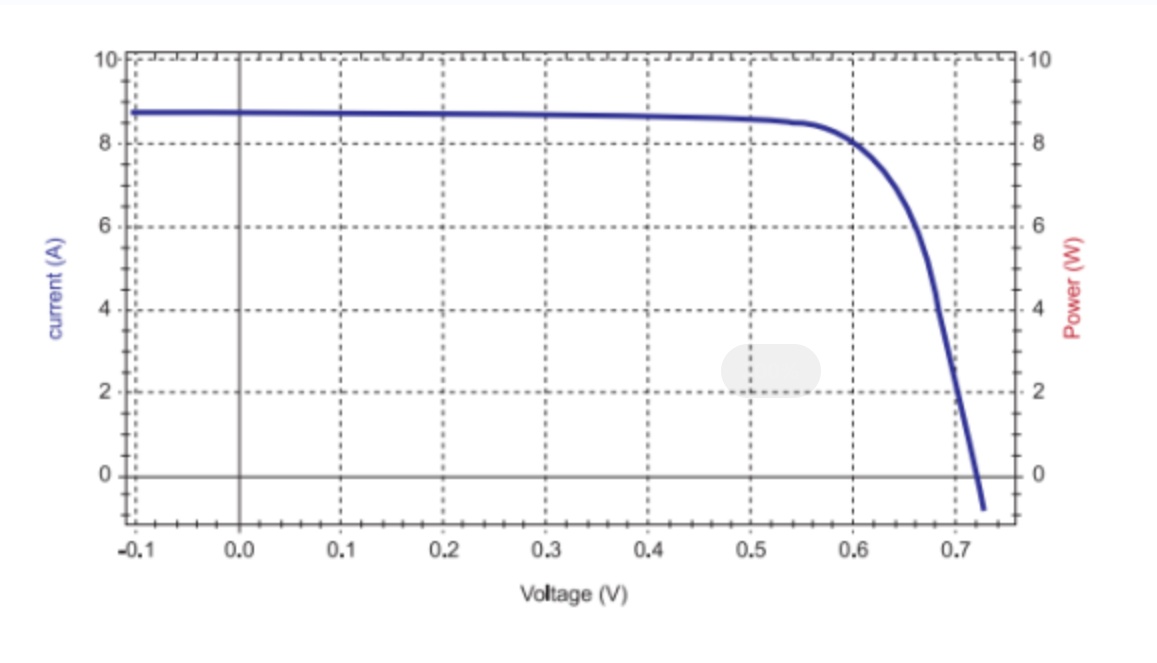Dimensions :
182mm*105mm±0.25mmThickness :
150µm±20µmFront (-) :
16*0.04mm busbars (silver), Blue layer (TCO)Back (+) :
16*0.04mm busbars (silver) Blue layer (TCO)
What is HJT Technology?
Heterojunction technology is a type of solar cell technology that combines the benefits of both amorphous and crystalline silicon. HJT solar cells are made up of thin layers of amorphous and crystalline silicon that are stacked on top of each other to form a sandwich-like structure. This unique construction allows HJT solar cells to achieve higher efficiencies compared to conventional solar cells.
Heterojunction solar cells can be classified into two categories depending on the doping: n-type or p-type.The most popular doping uses n-type c-Si wafers. These are doped with phosphorous, which provides them an extra electron to negatively charge them. These solar cells are immune to boron-oxygen, which decreases the purity and efficiency of the cells.P-type solar cells are better for space applications since they are more resistant to radiation levels perceived in space. The p-type c-Si wafers are doped with boron, providing the cell with one less electron, which positively charges them.
There are several steps involved in the manufacturing process of the heterojunction solar cell. These are the following: Wafer processing,Wet-chemical processing,Core Layer deposition,TCO deposition Metallization.
HJT technology is becoming increasingly popular in the renewable energy industry for several reasons. Firstly, its higher efficiency means that it can generate more electricity from the same amount of sunlight compared to conventional solar cells. This means that fewer solar cells are needed to generate the same amount of electricity, making HJT technology a more cost-effective option in the long run.Second, HJT technology is highly reliable and durable. It is designed to withstand extreme weather conditions, such as high winds and heavy snowfall, and has a longer lifespan compared to conventional solar cells. This means that HJT technology requires less maintenance and has a lower risk of failure, making it a more reliable and cost-effective option for homeowners, businesses, and solar installers.Third, HJT technology is more aesthetically pleasing compared to conventional solar cells. It has a sleek, black appearance that blends in seamlessly with a variety of building styles, making it a popular choice for residential and commercial applications.
Engineering Drawing(mm)

Light intensity reliability
|
Intensity(W/m²) |
1000 |
900 |
800 |
600 |
400 |
|
Uoc |
1.0 | 0.996 | 0.991 | 0.988 | 0.962 |
|
Isc |
1.0 | 0.903 | 0.803 | 0.602 | 0.403 |
| * Taking the Voc(Isc) tested at 1000W/m² as the standard, test the decrease of Voc (Isc) with the light intensity. | |||||
IV Curve

Spectral Response

Front electrical performance distribution
|
Efficiency
code
|
Efficiency
Eff(%)
|
Maximum
output power
Pmpp(W)
|
Maximum power
point voltage
Vmpp(V)
|
Maximumpower
point current
Impp(A)
|
Open-circuit
voltage
Voc(V)
|
Short-
circuit
current
Isc(A)
|
Fill factor
FF(%)
|
|
GT-182M-246
|
24.6
|
4.06
|
0.652
|
8.218 | 0.747 | 6.46 |
82.02
|
|
GT-182M-247
|
24.7
|
4.08
|
0.651
|
8.196 | 0.748 | 6.47 |
82.34
|
|
GT-182M-248
|
24.8
|
4.09
|
0.650
|
8.175 | 0.748 | 6.48 |
82.59
|
|
GT-182M-249
|
24.9
|
4.11
|
0.649
|
8.153 | 0.748 | 6.49 |
82.90
|
|
GT-182M-250
|
25.0
|
4.13
|
0.647
|
8.150 | 0.749 | 6.50 |
83.11
|
|
GT-182M-251
|
25.1
|
4.14
|
0.646
|
8.129 | 0.749 | 6.51 |
83.35
|
|
GT-182M-252
|
25.2
|
4.16
|
0.644
|
8.110 | 0.749 | 6.52 |
83.48
|
|
GT-182M-253
|
25.3
|
4.18
|
0.643
|
8.092 | 0.750 | 6.53 |
83.50
|
|
GT-182M-254
|
25.4
|
4.20
|
0.642
|
8.076 | 0.750 | 6.54 |
83.70
|
|
STC (Standard Testing Conditions): 1000W/m2, AM1.5, 25℃
|
|||||||
Back electrical performance distribution
|
Efficiency
code
|
Efficiency
Eff(%)
|
Maximum output
power
Pmpp(W)
|
Maximum
output voltage
Vmpp(V)
|
Maximum
output current
Impp(A)
|
Open-circuit
voltage
Voc(V)
|
Short-circuit
current
Isc(A)
|
FF(%)
|
|
GT-182M-225
|
>22
|
4.85
|
0.648 | 7.488 | 0.7457 | 7.9 | 83.38 |
|
GT-182M-213
|
21.6-22.0
|
4.81 | 0.647 | 7.44 | 0.7437 | 7.858 | 82.14 |
|
GT-182M-212
|
<21.6
|
4.76 | 0.646 | 7.376 | 0.7414 | 7.840 | 80.64 |
|
Standard test conditions:1000W/m², AM1.5, 25℃. The above technical parameters are subject to technical changes and tests.
All data contained in this datasheet is subject to change without notice.
|
|||||||